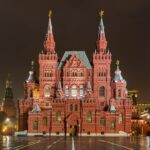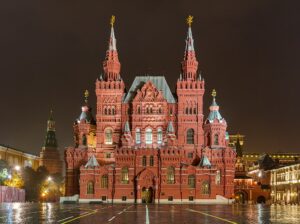Russia’s Anti-capitalist Intelligentsia

 As a cultural, literary, and art historian, Ilya Budraitskis’ book is a welcome assessment of the role of Russian dissident intellectuals from the Soviet days through the ascendancy of Vladimir Putin. A short preface by Tony Wood, a member of the editorial board of New Left Review, introduces the book. Its value for the reader is that in this English translation it combines new and engaging explorations of the varieties of Russian dissent from Marxist to liberal critiques. It opens a historic space that deepens our understanding of the varieties of Russian opposition long before the imprisonment of Alexei Navalny. Budraitskis brings under one cover his stand-alone writings since 2014, which accounts for some overlap in these essays. The book is a wide-ranging series of chapters that deepen our historical lens of the Putin era that is built upon the still living manifestations of the Soviet past. He portrays the history of socialist dissent that rejected both existing Soviet socialism in practice as well as liberal Western capitalism. In this he has succeeded but this focus is set forth most clearly in one extended chapter with the same name as the book itself, Dissidents Among Dissidents. (103ff) This is the heart of the book encompassing fully one-third of the text.
As a cultural, literary, and art historian, Ilya Budraitskis’ book is a welcome assessment of the role of Russian dissident intellectuals from the Soviet days through the ascendancy of Vladimir Putin. A short preface by Tony Wood, a member of the editorial board of New Left Review, introduces the book. Its value for the reader is that in this English translation it combines new and engaging explorations of the varieties of Russian dissent from Marxist to liberal critiques. It opens a historic space that deepens our understanding of the varieties of Russian opposition long before the imprisonment of Alexei Navalny. Budraitskis brings under one cover his stand-alone writings since 2014, which accounts for some overlap in these essays. The book is a wide-ranging series of chapters that deepen our historical lens of the Putin era that is built upon the still living manifestations of the Soviet past. He portrays the history of socialist dissent that rejected both existing Soviet socialism in practice as well as liberal Western capitalism. In this he has succeeded but this focus is set forth most clearly in one extended chapter with the same name as the book itself, Dissidents Among Dissidents. (103ff) This is the heart of the book encompassing fully one-third of the text.
Budraitskis sees his book as a cultural analysis and critique of Russia’s conservative ideological hegemony in the realm of the state and economy. Yet, the book’s orientation makes clear that an authentic critique of contemporary Russia can only come from an anti-capitalist stance. Budraitskis’ thesis is encapsulated by…” the underground socialists of the 1960s and 1970s, [were] dissidents among dissidents who, while criticizing both their government and Western capitalism from the left, refused to repeat the binary oppositions of the Cold War.” (2) He argues instead that the collapse of the Soviet state has been succeeded by post-ideological strife. These differences are based more on national identities than class conflicts between East and West. This explains how effortlessly Russian anti-Americanism shifted from socialist ideology to cultural nationalism. (31ff) Butraitskis sees the key antagonism as highlighted by the Russian reaction to the Ukrainian conflict in 2013-2014 and the subsequent legislation of repressive laws that deemed many Russian critics (including the author) as “foreign agents.” (37, fn. 2)
This nationalist turn was already seen in 2012 by the establishment of the Russian Historico-Military Society (RVIO) founded by the Ministries of Defense and of Culture. (49) As Sergei Chernyakhovsky argued in 2014, that struggle is one of Russian mass culture of a high standard against a primitive Western mass culture. (52) This does not convince the author as a cultural and art historian. He cites an art exhibition “Na Dne” (The Lower Depths), organized by the Art Without Borders Foundation, which is close to the ruling United Russia party. The show consisted of a series of photographs taken at a number of state theaters that challenged traditional values in a variety of ways (such as nudity, acts of violence or profanation of Christian symbols).(53) This can only remind one of Hitler’s 1937 “Degenerate Art Exhibition” confiscated from German museums. Rather, in this vein, Budraitskis argues that the whole Putin perspective is found in the belief that there is an “organic unity of nation and government.” (58) He writes, “The cultural institution of art itself is transformed into a powerful means for the division of society into a ‘moral majority’ (organically connected with the authorities through shared values and traditions) and a ‘minority’ (which asserts its cultural superiority over the majority). This situation is entirely in the interests of the ruling elite.” (60)
Budraitskis devotes one chapter to Ivan Ilyin who has made an imprint on Putin as a key anti-Bolshevik ideologue among the former liberal Cadets (Constitutional Democratic Party) and who was a fervent supporter of the Russian whites. His principal beliefs centered on Russian orthodoxy both in the state and religion. In his book, On Resistance to Evil by Force, Ilyin writes, “There is no need here to restrain oneself, for any reverent trepidation before the body of the evildoer, who is not in awe of the face of God…is mere moral prejudice, spiritual faint-heartedness, feeble-mindedness, sentimental superstition…fettering a healthy and faithful spiritual impulse by some psychosis.” (69) Thus, for Putin, the ideological vacuum of the collapse of existing socialism is filled by this combination of Ilyin’s “warrior and the monk.” (77)
In a subsequent chapter, with the infelicitous title of “The Eternal Hunt for the Red Man,” meaning Homo Sovieticus, Budraitskis makes the case that Russia has not cleansed itself of Soviet repression and that historical continuity remains. Here he extensively quotes Russian writer Vladimir Sorokin on Russian nationalism reflecting the past Soviet spirit.(82) Budraitskis writes that “the proposed methods for exorcising this spirit-decommunization (exorcism in relation to state and society) and lustration (the expulsion of the spirit from inanimate objects) solve only part of the problem.” (86) Budraitskis accentuates this in the next chapter entitled “Order in Disorder,” which is taken from Georg Lukács’ description of the Bolshevik Revolution as a “path from the ‘great disorder’ of capitalism, alienation and the splintered condition of human life, to the universal good.” (97) He recognizes the slow unraveling to the point where it has become difficult to bury this common history and accept that it has become a destructive revolutionary religion.
Budraitskis clearly believes that his book is the first scholarly monograph devoted to dissident socialists as a separate body of thought. Much of the dissent summarized in this book’s central chapter “Dissidents Among Dissidents” distills the compilation of samizdat writings of the de-Stalinization period under the Nikita Khrushchev “thaw”, the crucial reaction to the invasion of Czechoslovakia during the Leonid Brezhnev period and the 1980s when “most of the intelligentsia shifted to the right and harbored a deep distrust of any attempts at a renewal of “really existing socialism.” (107) During the thaw period the intelligentsia questioned whether the Soviet Union was a workers’ state, whose interests it defended, what the real structure of the Soviet society was and whether there was a socialist alternative to the power of the bureaucracy? (110-111) This dissent resulted in the various arrests and imprisonment of many in the Anti-Party Group, public poetry readers by the statue of Vladimir Mayakovsky, famed cultural poet during the Leninist period, and, finally, the Leningrad underground adherents.
After the Khrushchev thaw, during the Brezhnev period, critics focused on socialism from the left. A major spokesman during this time was Roy Medvedev who encapsulated the dissenters as “…scholarly community-philosophers, sociologists, historians, etc.- as well as from a section of the scientific and technical intelligentsia and some writers and other people engaged in cultural activities…” (137) Later the “right turn,” exemplified by Alexander Solzhenitsyn, focused on the undemocratic nature of the Soviet system and the bellwether of the turn to the West and the campaigns for human rights. On the left, there was Boris Kagarlitsky, a central promoter of Western Marxist writings of Antonio Gramsci, Georg Lukács, Leszek Kolakowski and others.
Lastly, Budraitskis analyzes the post-Soviet left. This he encapsulates in two major arenas: The opposition to the second Chechen War and its implied chauvinism and anti-Chechen Muslim racism and the anti-Putin dissent that opposed the new Russian hegemony of the state with capitalist big business embarking on mass deindustrialization and its impact on Russian working-class salaries and benefits. In Putin’s second period as president in 2012 and his reelection in 2018, the major opposition was expressed by Alexei Navalny, representing the liberal left that focused on electoral fraud and Putin’s ties to wealthy capitalists. Budraitskis sees Putin’s “managed democracy” and his response to this opposition: What makes Russia a democracy is its autonomy and its sovereignty in the global arena and its stance against the West.
Throughout Budraitskis’ book his major theme continues to reappear: Soviet and Russian dissidents qualify as an intelligentsia that acquired the characteristics of a class in itself throughout all the years of opposition and as Gramsci wrote a hundred years earlier—“organic intellectuals” aware of their role as confronting the dominant hegemony’s rule with the consent of its subordinated people.
References
Butraitskis, I. Dissidents Among Dissidents: Ideology, Politics and the Left in Post-Soviet Russia (London: Verso, 2022).
Ilvan, I. On the Resistance of Evil by Force (Moscow: Russkaia kniga, 1996).
Kagarlitsky, B. Dialektika nadezhdy (Dialectics of Hope) (Paris: Izd-vo Slovo, 1988).
Medvedev, R. On Socialist Democracy (London and Basingstoke: Macmillan, 1975), pp. 57-58.
Lukacs, G. “Bolshevism as a Moral Problem,” Social Research 44/3, Autumn 1977, pp. 416-424.
Sorokin, Vladimir, Interview, Kommersant, 17 August 2015.